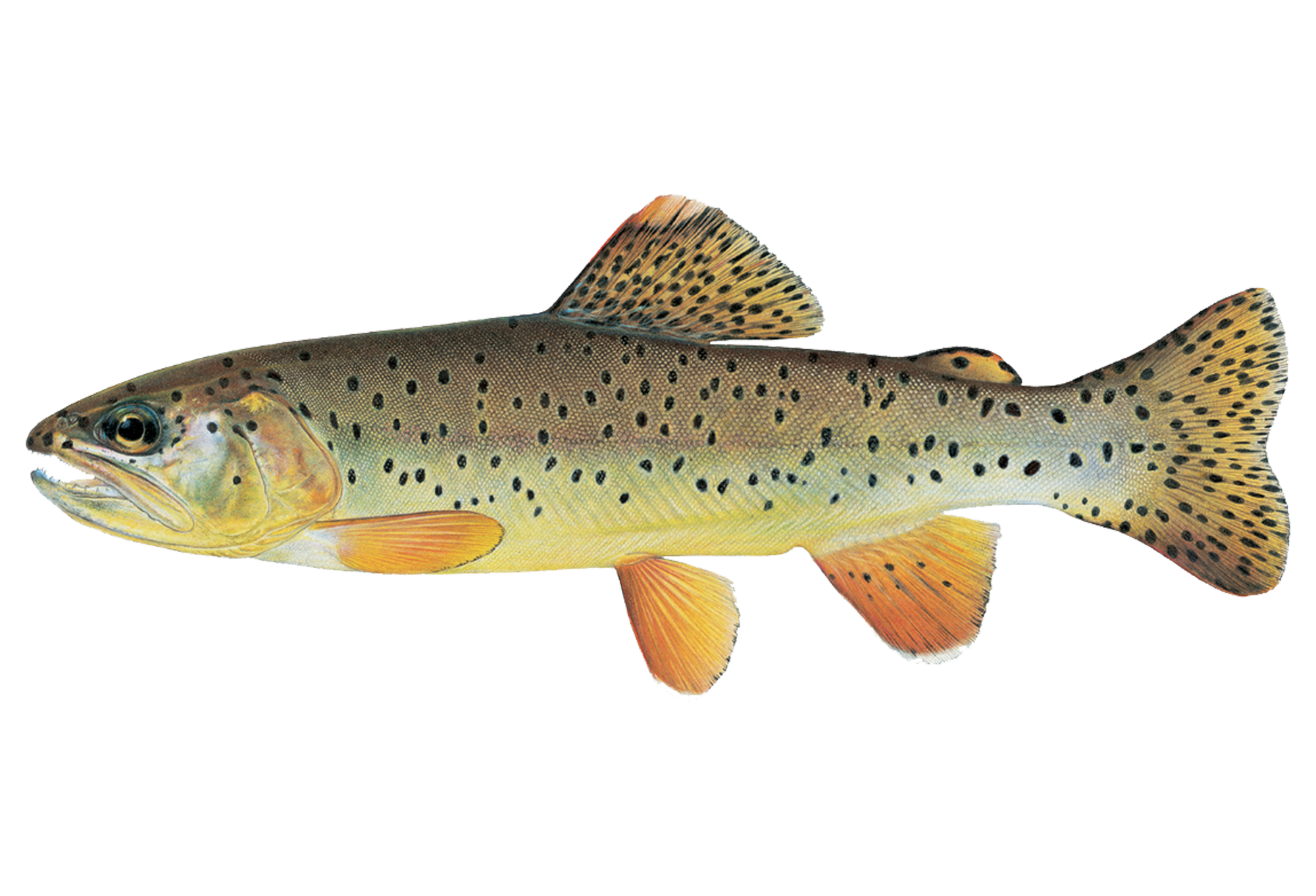Apache Trout (Oncoryhnchus gilae apache)
Species Summary and Status: The Apache trout is one of only two trout native to Arizona. The Apache trout was historically found only in the nearly 700 miles of headwaters of the White, Black and Little Colorado rivers above 5,900 feet. At one point, nearing extinction, Apache trout occupied only 30 miles of their historic range. Now, Apache occupy approximately 25 percent of their native habitat.
The Apache trout was one of the first species to be listed as endangered under the Endangered Species Act on March 11, 1967 (32 FR 4001). It was down-listed to threatened in July 1975 (40 FR 29863, Final Special Rule, 17.44(a)) based on recovery actions and a reanalysis of data. The down-listing allowed state, tribal, and federal agencies and partners to conduct management actions under the Apache Trout Recovery Plan, regulate take of the species, and establish sport fishing opportunities.
Looking Forward: Currently, the Arizona Department of Game and Fish report that 30 pure (non-hybridized) Apache trout populations exist within their historic range in Gila, Apache and Greenlee counties of Arizona, on lands of the Fort Apache Indian Reservation (FAIR) and Apache-Sitgreaves National Forest (ASNF).
While habitat restoration remains a key initiative due to climate change, stream warming and damage from wildfires, fish barriers are crucial in decreasing continued hybridization with invasive species. While the Apache trout recovery team maintains good population data, habitat conditions and fish barriers, the barrier on the West Fork of the Black River will need enhanced monitoring in order to ensure improved effectiveness.
Additional Sources: Trout Unlimited, 2015. State of Trout: A Report on the Status and Trends of Native Trout In The United States. Trout Unlimited, Arlington, Va.



